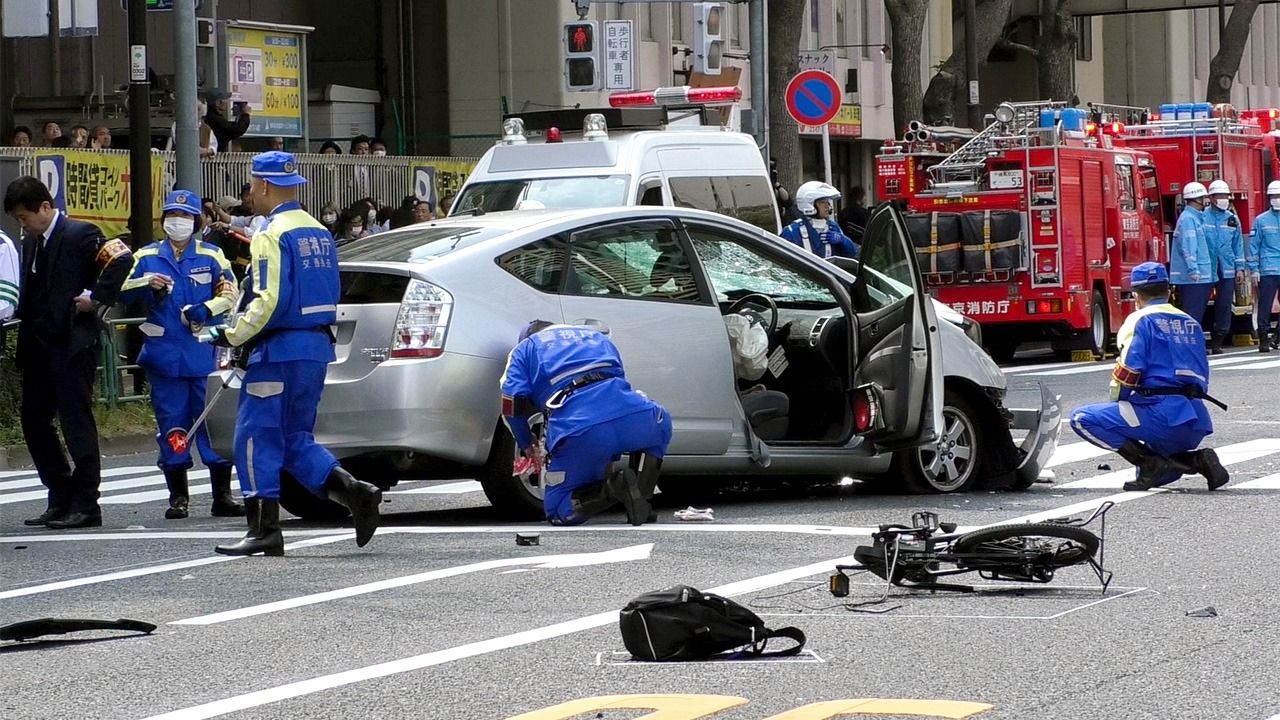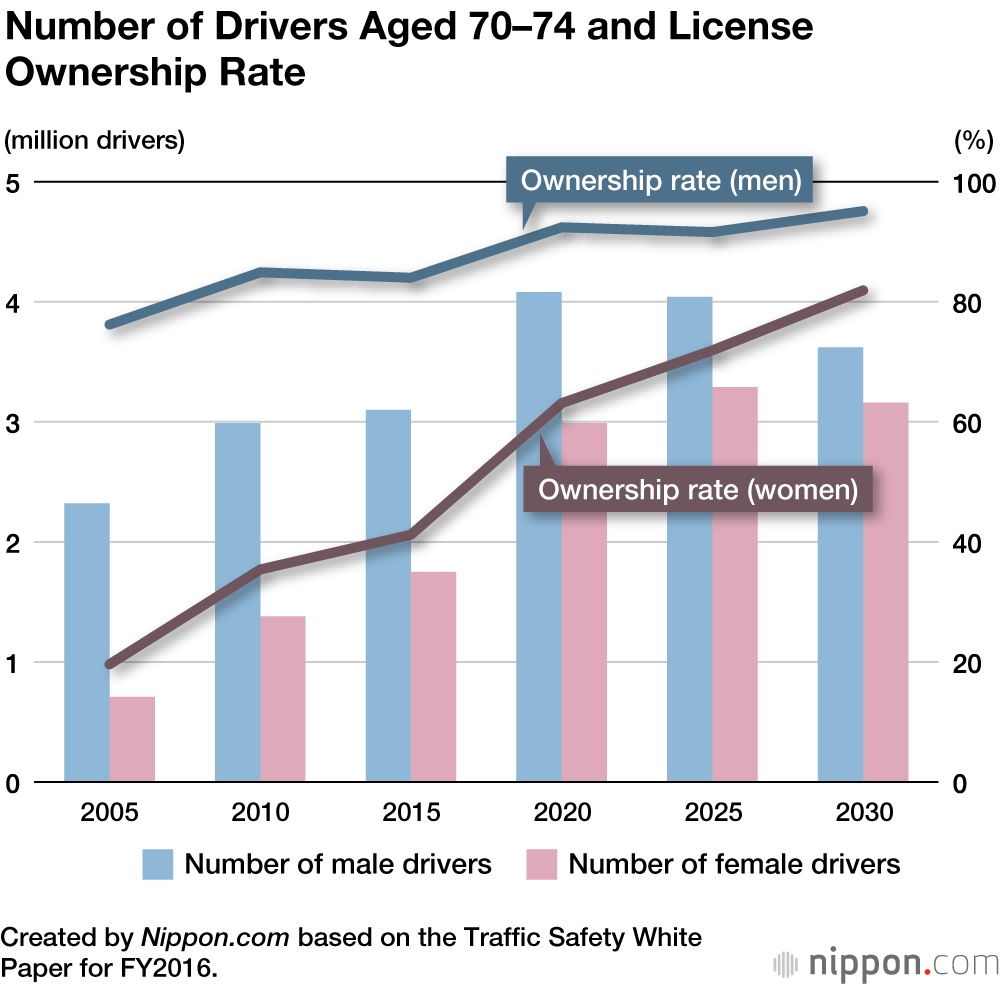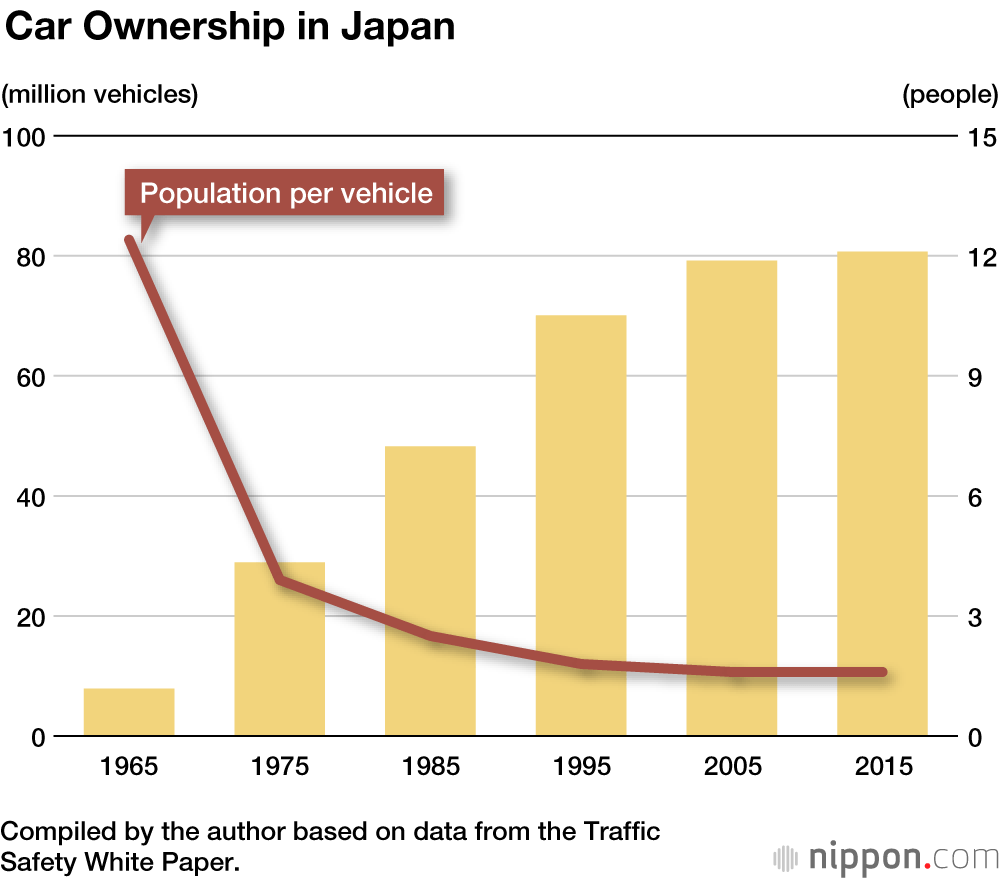
Elderly Drivers Reluctant to Quit in Japan’s Car-Centered Society
Society- English
- 日本語
- 简体字
- 繁體字
- Français
- Español
- العربية
- Русский
Hanging on to Their Licenses
Japan faces a serious problem with elderly drivers. With the elderly making up a growing proportion of the population, and many continuing to hold onto their licenses well into old age, the number of senior drivers is increasing rapidly. This is leading to a commensurate rise in their involvement in serious accidents. One tragic example took place on April 19 this year, when an 87-year-old lost control of his car in a crowded area of Ikebukuro in Tokyo, killing a mother and her young child. This incident and others like it, prominently reported in the media, have led to growing pressure for elderly drivers to give up their licenses and stop driving once they become too old to get safely behind the wheel. But for many seniors, cars are an essential part of their daily lives and quitting driving does not come easily.
Why does Japan seem to suffer from the issue of accidents involving elderly drivers more than other countries? One reason is that its transformation into an automobile-dominated society has happened alongside the demographic shift to a super-aging society. Cars became an essential part of people’s lives during the postwar period of rapid economic growth. This happened rapidly, and before the necessary social infrastructure was fully in place. A car-first way of thinking came to dominate people’s lives, and this has inevitably led to problems as Japan grays. The situation is particularly serious in smaller towns and provincial cities where the shift to a car-centric lifestyle was especially quick.
In Japan, the arrival of the automobile society came somewhat later than in most of its developed peers. It was only really in the 1970s that cars became the default method of getting around. In other words, the country’s addiction to the combustion engine is still less than 50 years old. In the 1970s, the booming economy saw cars quickly take over the streets of urban areas around the country. This brought a dramatic change in people’s lifestyles. Cars rapidly emerged as the most economically efficient way of getting around, and effectively replaced the trams and bicycles that had been the main modes of transportation until the 1960s.
Provincial cities had to rebuild quickly as cars took over. Even so, the rapid increase in the number of cars soon made it impossible to provide sufficient parking spaces in city centers, and large retail outlets, hospitals, and other public facilities were forced to relocate to the suburbs. The number of people using the city centers plummeted, and before long, previously bustling city centers became hollowed out, replaced by shuttered buildings and empty streets.
Car-friendly new towns started to spring up several kilometers outside the traditional city centers, and became vibrant new hubs of activity. Built on top of what had previously been arable fields and woodland, they were inevitably provided with huge flat parking lots capable of accommodating huge numbers of cars. For people in regional cities, the family car became the only practical way of getting to suburban supermarkets and hospitals.
Today, the people who were young at the time of this change are entering old age. The car is such an important part of their lifestyles, however, that many are reluctant to give up their mobility by surrendering their licenses, even when their health starts to decline.
The Situation in Europe
How does Japan compare with Europe, which faces its own aging problems and where the automobile era started a little earlier than in Japan? One difference is that in much of Europe, trams did not disappear from provincial city streets, even as cars became dominant during the second half of the twentieth century. Careful rules were drawn up to secure an ongoing role for public transportation alongside private cars on the streets of cities and towns.
Another important aspect is that cars were not given priority over all other traffic. Instead, social rules were based on the idea of the equality of all road users: pedestrians, bicycles, public transport, and cars.
Trams in Europe generally have right of way over cars, making public transport a quicker way of getting around town than driving. Because of this, residents were aware of the merits of trams and other public transport, ensuring that they did not disappear from the streets of European cities even when cars became the normal means of day-to-day transport.
This forms a stark contrast with the situation in Japan, where cars rule the roost in most provincial cities. Even on narrow roads without sidewalks, cars often rush by at high speeds without apparent concern for others, forcing pedestrians and cyclists to scamper up onto the curb. Roads are ruled by a class hierarchy, with cars at the apex, followed by motorbikes, bicycles, and lowly pedestrians at the bottom of the pile. The weakest people of all in this hierarchy are elderly pedestrians—who are involved in a high number of fatal traffic accidents in Japan, another depressing characteristic of the country’s car-dominated society.
In both Europe and Japan, all drivers regardless of age must satisfy certain requirements, but European drivers face higher hurdles than their counterparts in Japan. For example, the speed humps and poles commonly found in residential areas in Europe are rarely seen in Japan. These aspects of urban design make driving more difficult for the elderly, meaning that they are more likely to give up their licenses without trying to go beyond the point at which it is safe for them to do so. The stringent penalties imposed for traffic law infringements also encourage many not to renew their license.
Another crucial fact is that even in regional cities and towns, a certain level of public transportation remains in place. This means that older people can still get around even after they give up driving, and is one of the major factors that encourages elderly drivers in Europe to give up their licenses.
Helping People Live Without Cars
Since 1998, Japan has required elderly drivers to attend lectures on road safety when renewing their licenses, making it one of only a few countries worldwide to offer special classes for all drivers aged 70 and over. The main objective is to increase awareness of the deterioration in physical reaction times that comes with increasing age. Since 2009, all drivers aged 75 and over have also been required to undergo a cognitive function test to screen for Alzheimer’s and other forms of dementia. In some cases, applications for a new license extension can be turned down depending on the results of the test, which was made more stringent in 2017.

A cognitive function test is carried out as part of a safety awareness class for older drivers in Mito, Ibaraki Prefecture. (Courtesy Tokoro Masabumi)
Even so, the continuing frequency of accidents involving elderly drivers who are clearly not driving safely despite having passed the tests raises serious doubts about whether they are really fit for purpose. And with the sheer numbers of elderly drivers increasing all the time, the system of driver education is struggling to keep up. The authorities’ trial-and-error experimentation continues: the government has recently mooted introducing a special license for elderly drivers that would only allow them to drive vehicles equipped with automatic brakes.
The current system of driver education and cognitive function tests is clearly not doing an adequate job of keeping unsafe drivers off the roads. This has prompted many family members and local communities to try various approaches to encourage elderly drivers to give up their licenses voluntarily. And the number of elderly drivers choosing not to renew their licenses is steadily increasing. Unfortunately, most live either in the big cities or in smaller towns that have some form of public transportation as an alternative to cars.
One interesting approach that considers the needs of elderly drivers in regional communities has been underway since 2015 in Kumamoto Prefecture in Kyūshū, where nurses work in driving license renewal centers to encourage elderly drivers to consider giving up their licenses and also offer advice and support to help them adjust to life after driving.
The nurses are normally experienced women who have lived in the local community for many years and are therefore trusted by drivers and their family members. Equipped with both medical knowledge and life experience, they are ideally qualified for this kind of work. Because they know the area well, they can give sensible and realistic advice to drivers and help them plan for their lives after they give up their licenses. The system has had impressive results.
As we approach an age in which almost all elderly people drive, the problem is not simply one that concerns driving. It also involves the paucity of proper support available for elderly people living in local communities outside the big cities. In this sense, the traffic problem encapsulates the wider problems of society in miniature. It is crucial that the response to this problem involves both traffic laws and wider welfare concerns. Experts in different professional fields and local communities need to work to address these problems together and build a society that will provide a better quality of life for all citizens into their old age.
(Originally published in Japanese on July 5, 2019. Banner photo: The aftermath of a fatal accident that occurred when a car driven by an elderly man veered out of control on April 19, 2019, killing a young child and her mother and seriously injuring several others. © Jiji.)

